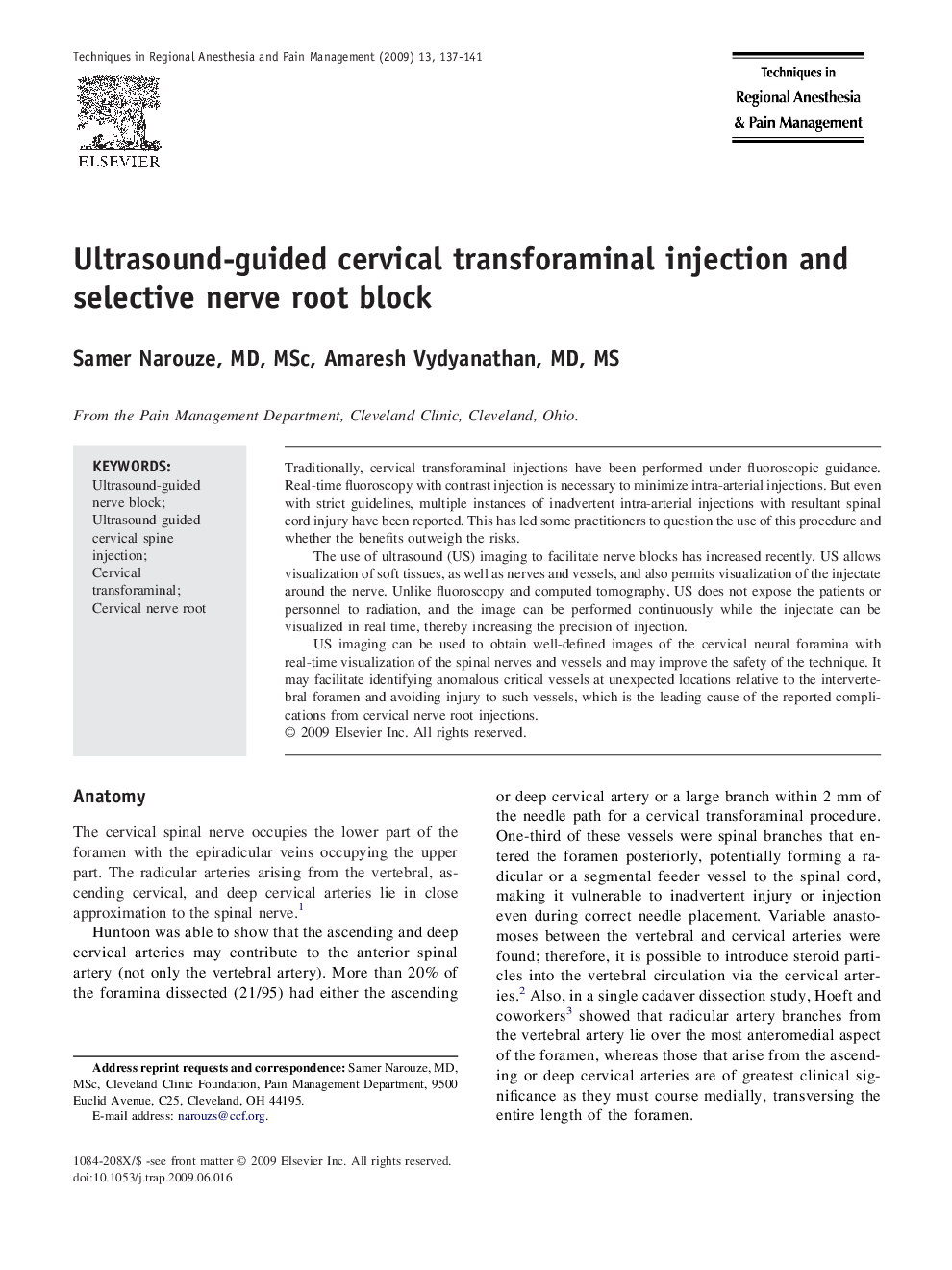| Article ID | Journal | Published Year | Pages | File Type |
|---|---|---|---|---|
| 2772353 | Techniques in Regional Anesthesia and Pain Management | 2009 | 5 Pages |
Traditionally, cervical transforaminal injections have been performed under fluoroscopic guidance. Real-time fluoroscopy with contrast injection is necessary to minimize intra-arterial injections. But even with strict guidelines, multiple instances of inadvertent intra-arterial injections with resultant spinal cord injury have been reported. This has led some practitioners to question the use of this procedure and whether the benefits outweigh the risks.The use of ultrasound (US) imaging to facilitate nerve blocks has increased recently. US allows visualization of soft tissues, as well as nerves and vessels, and also permits visualization of the injectate around the nerve. Unlike fluoroscopy and computed tomography, US does not expose the patients or personnel to radiation, and the image can be performed continuously while the injectate can be visualized in real time, thereby increasing the precision of injection.US imaging can be used to obtain well-defined images of the cervical neural foramina with real-time visualization of the spinal nerves and vessels and may improve the safety of the technique. It may facilitate identifying anomalous critical vessels at unexpected locations relative to the intervertebral foramen and avoiding injury to such vessels, which is the leading cause of the reported complications from cervical nerve root injections.
